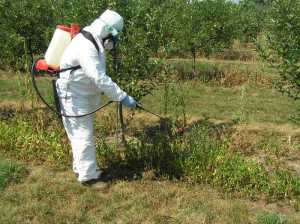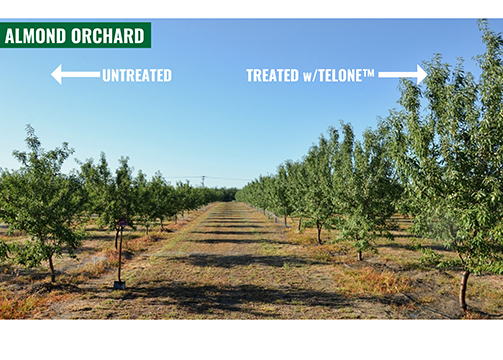EPA Announces Children Under 18 Can No Longer Handle Pesticides

This backpack sprayer is being used to dispense an herbicide for weed control. (Photo credit: Andrew Landers, Cornell University)
EPA is announcing stronger protections for the nation’s 2 million agricultural workers and their families working on farms, forests, nurseries, and greenhouses.
The revisions to the 1992 Agricultural Worker Protection Standard will afford farmworkers similar health protections that are already afforded to workers in other industries, according to the agency.
“President Obama has called closing gaps of opportunity a defining challenge of our time. Meeting that challenge means ensuring healthy work environments for all Americans, especially those in our nation’s vulnerable communities,” said EPA Administrator Gina McCarthy. “We depend on farmworkers every day to help put the food we eat on America’s dinner tables — and they deserve fair, equitable working standards with strong health and safety protections. With these updates we can protect workers, while at the same time preserve the strong traditions of our family farms and ensure the continued the growth of our agricultural economy.”
“No one should ever have to risk their lives for their livelihoods, but far too many workers, especially those who work in agriculture, face conditions that challenge their health and safety every day,” said U.S. Secretary of Labor Thomas E. Perez. “Workplace illness and injury contribute greatly to economic inequality, and can have a devastating impact on workers and their families. By promoting workplace safety, these provisions will enhance economic security for people struggling to make ends meet and keep more Americans on the job raising the crops that feed the world, and we are proud to support the EPA in this effort.”
EPA’s updates reflect extensive stakeholder involvement from federal and state partners and the agricultural community including farmworkers, farmers and industry. These provisions will help ensure farmworkers nationwide receive annual safety training; that children under the age of 18 are prohibited from handling pesticides; and that workers are aware of the protections they are afforded under the new action and have the tools needed to protect themselves and their families from pesticide exposure.
The revisions to the Worker Protection Standard cover many different areas. According to EPA, the major revisions include:
- Annual mandatory training to inform farmworkers on the required protections afforded to them. Currently, training is only once every 5 years.
- Expanded training includes instructions to reduce take-home exposure from pesticides on work clothing and other safety topics.
- First-time ever minimum age requirement: Children under 18 are prohibited from handling pesticides.
- Expanded mandatory posting of no-entry signs for the most hazardous pesticides. The signs prohibit entry into pesticide-treated fields until residues decline to a safe level.
- New no-entry application-exclusion zones up to 100 feet surrounding pesticide application equipment will protect workers and others from exposure to pesticide overspray.
- Requirement to provide more than one way for farmworkers and their representatives to gain access to pesticide application information and safety data sheets – centrally-posted, or by requesting records.
- Mandatory record-keeping to improve states’ ability to follow up on pesticide violations and enforce compliance. Records of application-specific pesticide information, as well as farmworker training, must be kept for two years.
- Anti-retaliation provisions are comparable to Department of Labor’s (DOL).
- Changes in personal protective equipment will be consistent with DOL’s standards for ensuring respirators are effective, including fit test, medical evaluation, and training.
- Specific amounts of water to be used for routine washing, emergency eye flushing and other decontamination, including eye wash systems for handlers at pesticide mixing/loading sites.
- Continue the exemption for farm owners and their immediate families with an expanded definition of immediate family.
Source: EPA










